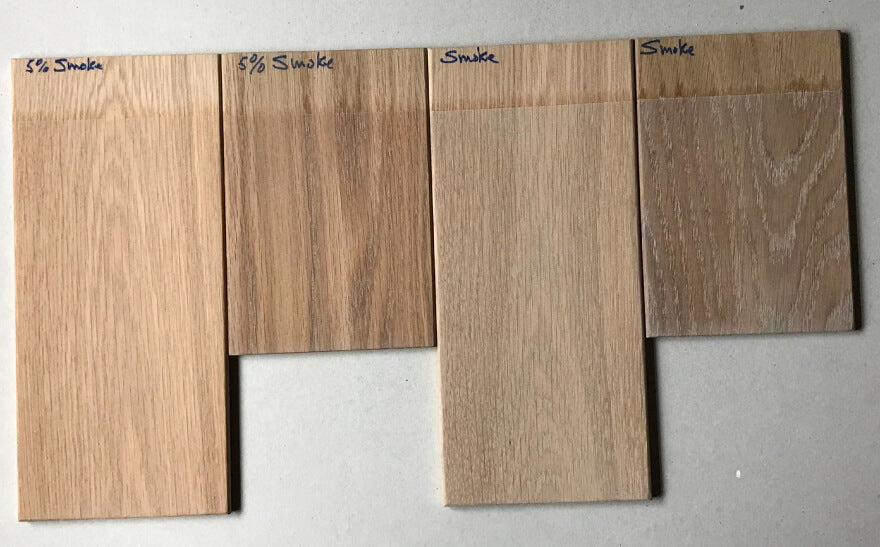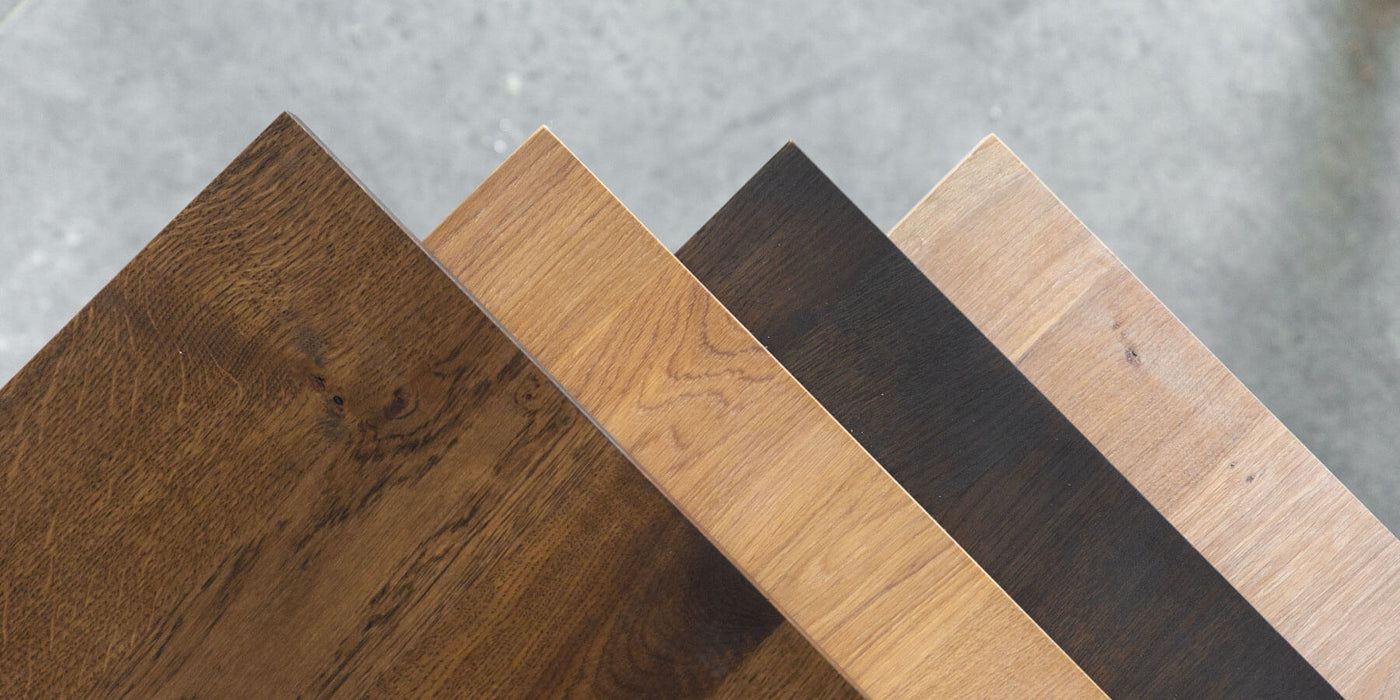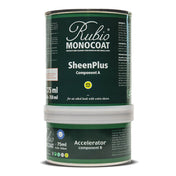Today we are going to discuss making wood stain samples using Oil Plus 2C sample bottles.
Great colour samples are immensely important to the customer. If the colour sample is not representative of the final colour, it often leads to frustration and ultimately, unnecessary work.
It does not matter if you are dealing with a wood floor or a wood table; the approach will be similar.
Selecting wood for a colour sample
The wood selected for a wood colour-sample needs to represent the wood that is sourced for the actual project. The best way to do this is to use wood from the same batch(es) you will be using for the final project, but if this is not possible, use wood that closely resembles that of the project.
Wood is a naturally growing material, and variations in colour within one species are typical and to be expected. Variation in wood colour will determine how the final colour will be when a coloured oil is applied. This must always be explained to a prospective customer!
For example, if there is no or minimal sapwood present in a wood floor and the colour sample is performed on a primarily sapwood board, you will more than likely not get the project to match with the approved colour sample satisfactorily.
Check out the below image where a light colour White Oak and a darker White Oak board are sampled with Oil Plus 2C colours Smoke 5% and Smoke.

Oil Plus 2C "Smoke" & "Smoke 5%" shown on different White Oak boards
In my experience, any wood species used in a project may exhibit up to 3 colour variations within that species.
Unless the project is completed with selected wood close in colour, try to have at least 2-3 colour variations in the wood chosen for the colour sample board.
Preparing the sample surface
Sanding
When preparing wood for colour samples, it is essential to mimic the sanding process that will be performed on the actual project, regardless if it is a wood floor or a wood table.
Sanding affects how open the grain of the wood is, and as a result, differences in sanding will allow for more or less product penetration. If using a pigmented colour, more product penetration results in more pigment, which in turn affects the final colour.
The recommended final sanding grit for Oil Plus 2C is 120.
Typically, sanding a wood floor is done with a big aggressive belt sander (using 2-3 different abrasive grits, starting coarse and using progressively finer grits) followed by a finish sanding procedure whereas a tabletop may get sanded with only random orbit sanders.
Again, when making colour samples, it is critical to mimic the exact sanding process that will be done when sanding the finish surface.
Sample preservation
Many hardwood flooring contractors sand the floor and do their colour samples directly on the floor. While this is a very good option, the approved colour sample will get sanded away. Now that proof is gone forever, and it cannot be used as a reference against the final finish colour.
Occasionally the perception of the colour will change once the final finish is applied. This could have to do with a different colour light source, or the walls may have been repainted in a different colour. In those cases, the customer may have a completely different colour experience, even when the final project colour is an excellent match. When the approved colour sample is still present, it is useful for comparing the final colour in such cases.
Again, don’t forget that slight colour variations are normal and to be expected.
Applying the sample colour
When applying a Rubio Monocoat oil like Oil Plus 2C on a colour sample board, it is essential to mimic the actual oil application process. This is more important when dealing with wood flooring vs. dealing with furniture.
Flooring
In the case of hardwood floors, it is typical to use equipment like a heavy electric floor buffer to work the oil into the wood surface and follow with that same tool to towel-buff off the excess oil from the surface. This mechanical application process is not easily replicated by just applying the oil by hand wiping. So, mimic the actual floor application process with a simulated process when creating colour samples. The use of an electric sander or small automotive buffer outfitted with red/white pads and rags may be more effective than just wiping the oil by hand when creating a colour sample panel.
Furniture
With wood furniture, you often don't use such heavy and powerful floor finishing equipment. Instead, oiling and buffing is completed mostly by hand. In that situation, hand finishing is just fine for creating a colour sample.

